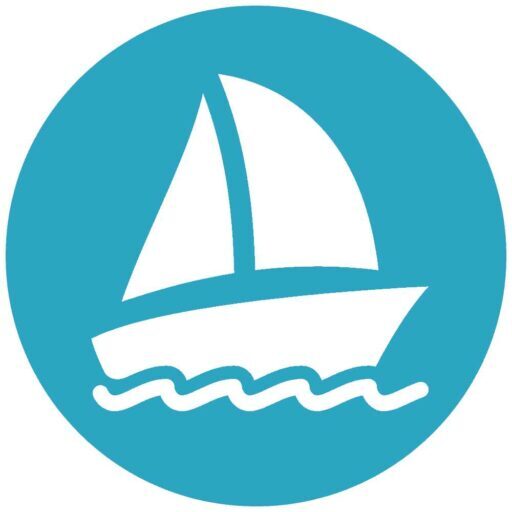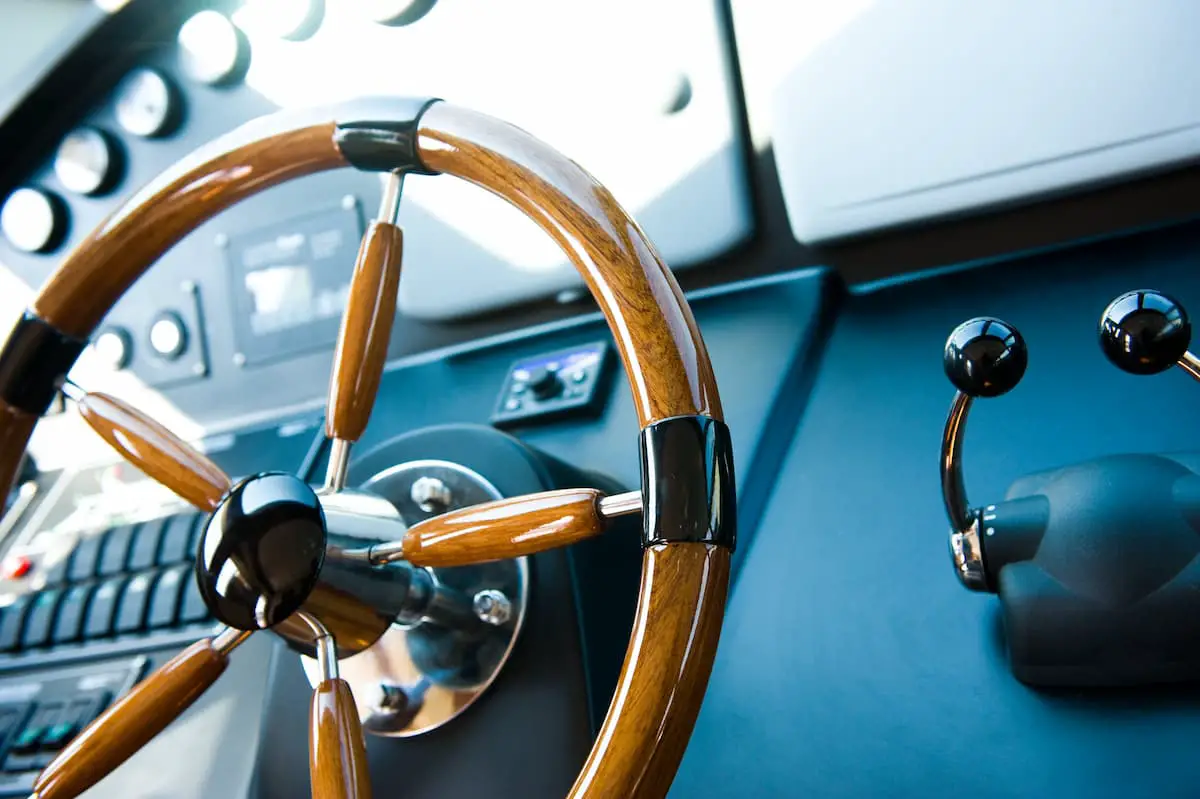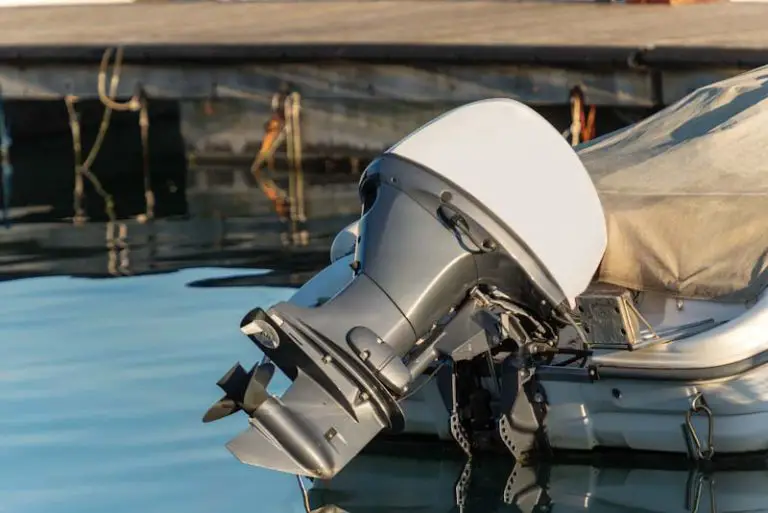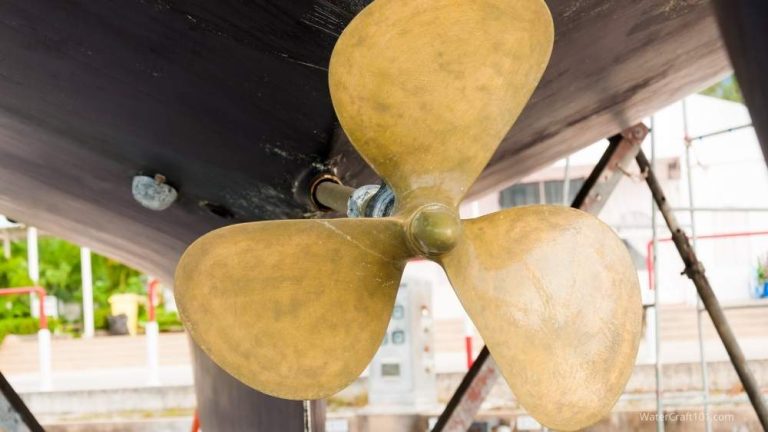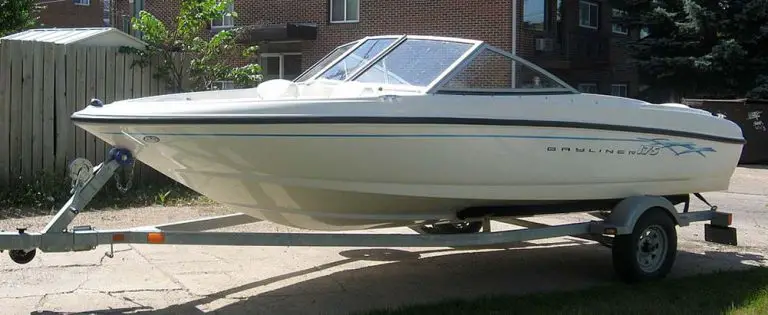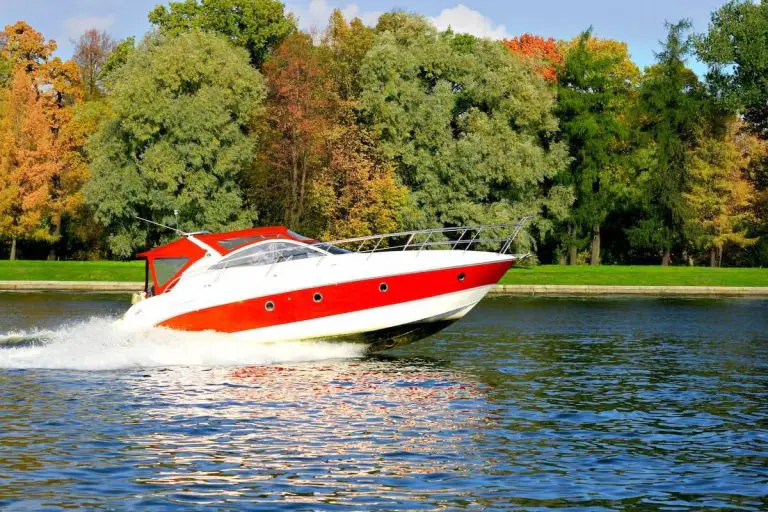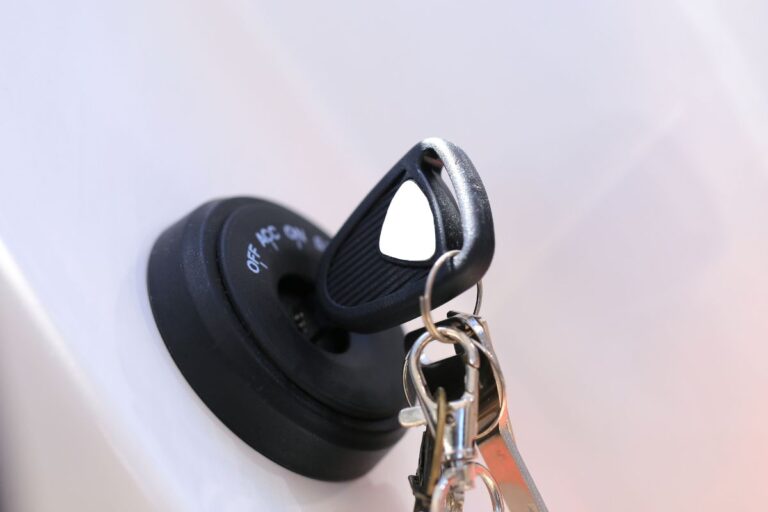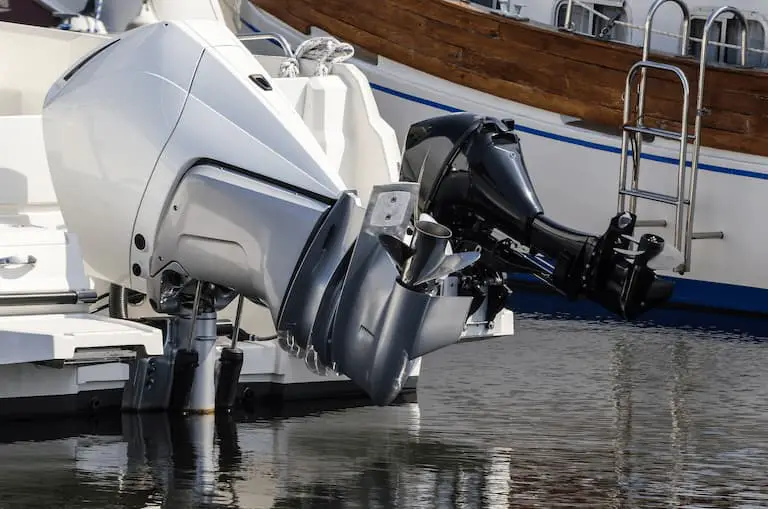How To Fix Torque Steer on a Boat? (Complete Guide)
Torque steer is an issue peculiar to boats with single propeller systems. It happens when the engine attempts to pull the boat’s tail end in the same direction as the propeller spins when accelerating. This is a serious problem that needs to be addressed immediately, and luckily, there are a few ways to do that.
Here’s how to fix torque steer on a boat:
- Use trim tabs.
- Adjust the trim angle.
- Use power trim.
- Use power steering.
- Adjust engine height.
- Use hydraulic steering.
In this article, I’ll explain these methods in detail and how to tell which solution may be the right one for you. I’ll also provide a quick method to check for torque steer problems and some top tips for boat steering system maintenance.
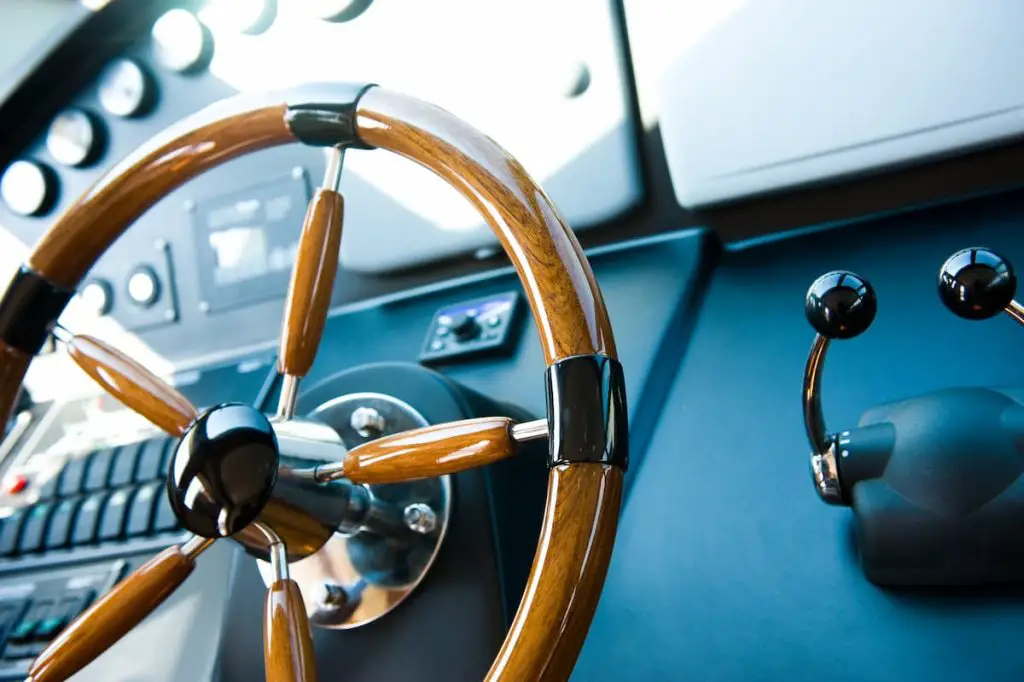
1. Use Trim Tabs To Adjust Torque Steer
Torque trim tabs, or trim tabs, are small fin-like devices situated slightly above and just behind the propeller of boats. They’re adjustable and installed on the gear housing to assist in counteracting steering torque and its effects. They also aid in reducing the general impact of torque on the boat’s trajectory.
Using Mechanically-Controlled Trim Tabs
Most boats come with trim tabs, and you only need to slightly fiddle with the device to help fix the unsavory effects of torque steer. Some boats include an adjustable trim tab that you may set to cancel out torque steer without adjusting the trim tab by hand.
Fortunately, it is simple to use these adjustable torque trim tabs, and you can pick the engine trim setting you want to balance with the push of a few buttons (or a controller, in some cases). I must note that the torque trim tab can only be in one position, and you may need to adjust it a couple of times, depending on your experience.
You can cancel out torque steer using mechanically-controlled trim tabs by dropping the torque trim tab on the opposite side of whichever direction the boat’s stern pulls while backing.
Therefore, if the boat’s stern (tail end) moves to port when backing up, you’ll need to adjust the torque trim tab to starboard. If the boat is cruising to starboard, you should move the torque trim tab to port.
Using Manually-Adjusted Trim Tabs
Not all boats come with button-controlled torque tabs, so how can you use the trim tab for boats without automatic systems? You’ll need to adjust the trim tab manually. However, you must first locate the torque trim tab on your boat.
Boat manufacturers will most likely fix the trim tab beneath the horizontal plate that towers over the propeller—or under the transom—if an outboard motor drives your boat. As I previously said, it resembles a tiny fin or small rudder.
After locating your boat’s trim tab, check the center of its base for a nut. Before you continue adjusting the trim tab, you need to note the direction the boat’s tail end travels when you move. After that, use a socket to release the nut holding the torque trim tab.
This next part requires a little focus. You need to adjust the torque trim tab to starboard if the boat’s tail end (stern) advances to port when backing up. Conversely, you should adjust the torque trim tab to port if the boat moves to starboard.
Remember to tighten the nut firmly after you’ve made the necessary changes.
You need to observe how your boat reacts after adjusting the trim tab. The boat may require some minor adjustments, and you can fine-tune the effect of the trim tab by repeating the process I explained above.
Regardless of how hard you fine-tune the trim tab, you may never eliminate torque steer on your boat completely. However, if you correctly use a torque trim tab to remove most of it, you’ll learn to adjust for any torque left when steering your boat.
2. Adjust the Trim Angle To Correct For Torque Steer
We have seen that making a few adjustments to the torque trim tab can reduce torque steer by several degrees. Yet, what effect does adjusting trim angle have on torque steer? The trim angle of an outboard drive on a boat is the angle between the bottom of the boat and the propeller shaft, generated by bringing the engine drive closer to your boat transom.
There are various terms used when describing trim angle, including “trimming in,” “trimming down,” and “trimming under.” All of these describe the movement of the engine drive closer to the boat transom.
Trimming may also refer to moving the outboard drive away from the boat transom, referred to as “trimming out” or “trimming up.”
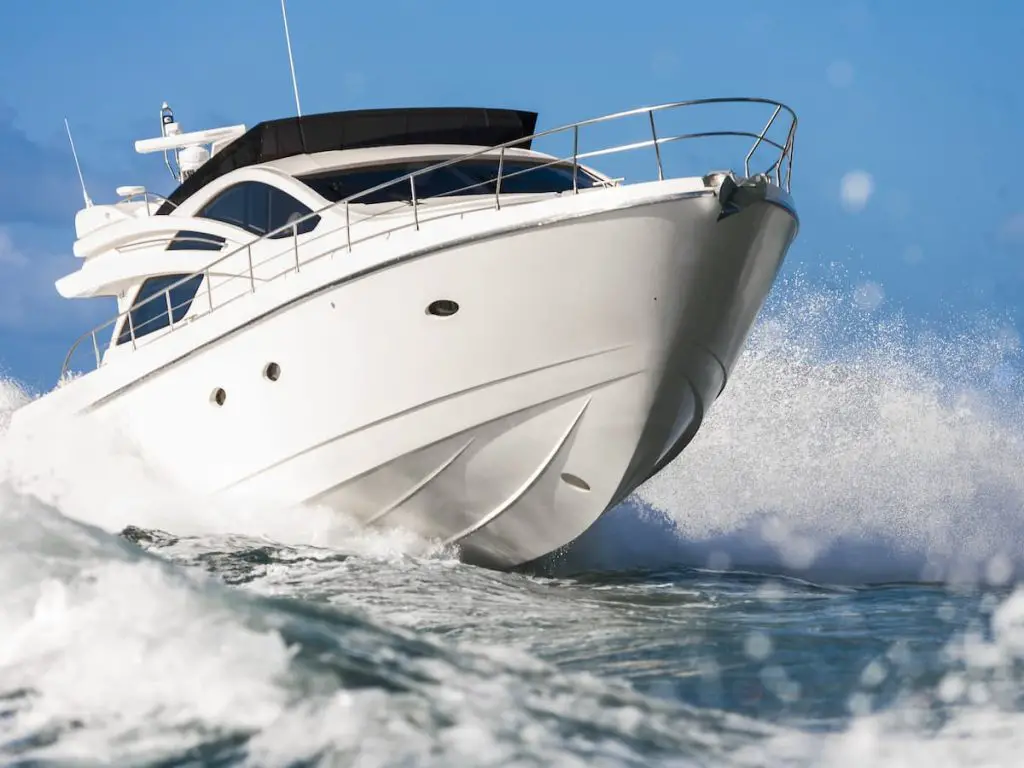
Effect of Trimming In and Trimming Out on Torque Steer
A boat is considered to be at “zero” trim (or neutral trim) when traveling on the water with its trim set such that its propeller shaft is level to the water’s surface. Trimming is a term that refers to raising or reducing the angle that the drive makes with the boat’s bottom, which influences the boat’s running angle as it moves through the water.
A trimmed in engine will have its bow close to the water surface when the boat moves, allowing for optimum start-up acceleration and the quickest time to plane. However, the bow may drop too low if you trim in excessively, and the boat will run overly wet.
Trimming in may result in top speed reduction, fuel economy drops, bow steering, and torque steer increase. The torque steer is usually to the starboard side if your propeller spins in this direction. Nevertheless, extreme trimming might occasionally cause your boat to drift to the left.
An engine that has been trimmed out will have its bow farther from the water surface when the boat is moving. If the engine is trimmed out too much, the propeller may lose its grip on the water, and this may cause fast vee-bottom boats to “walk” from starboard to port (a phenomenon known as “chine walking”).
Furthermore, trimming out may cause torque steer to develop in the opposite direction as when trimmed in, making it harder to get on plane and affecting handling. It’s also possible the boat will get porpoised.
For these reasons, it’s imperative to observe the directional effect of torque steer on your boat and trim in or trim out, as appropriate. Sometimes, you may need to set your boat at neutral trim to get rid of torque steer completely.
You can also combine these adjustments with a torque trim tab to increase the likelihood of completely removing torque steer on your boat.
The trim angle of your boat’s stern drive significantly impacts the boat’s planing angle, affecting peak speed and handling. In theory, there should be minimal, if any, steering stress when you entirely submerge the boat’s propeller, with the propeller shaft nearly parallel to the water surface.
Effect of Trim Angle on Your Boat
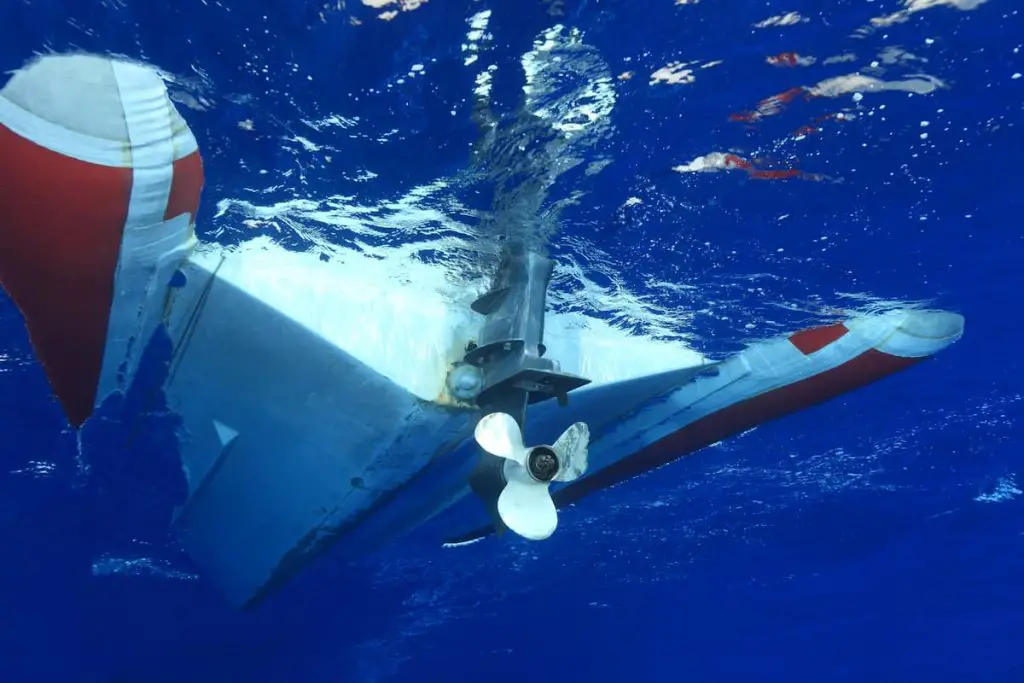
However, difficulties can arise due to a stern drive’s skewed steering axis, and this might result in considerable torque steer.
When the stern drive is trimmed in, the blade on one side of your boat’s propeller has a higher pitch, while the blade on the other side has effectively less pitch. Of course, the angle of the blades is relative to the water’s surface. Usually, the right side has a downward-moving blade, and the left side has an upward-moving blade.
This imbalance will cause the engine to pull to the right, causing the boat to make unplanned right turns. Therefore, you must counteract this force if your boat is to proceed in a straight course.
3. Use Power Trim To Help Eliminate Torque Steer
You can also fix torque steer quickly on a boat using a power trim. A power trim is a device that allows you to adjust the angle of the drive to trim out or trim in. These are standard on most boats with sterndrives and bigger outboard motors, and available for others, making trimming significantly easier.
A power trim will enable you to change the angle between the propeller shaft and the boat’s bottom at the press of a button.
The angle of the boat’s bottom to the water while on plane has a lot to do with top speed, fuel efficiency, handling, and how choppy the water is when driving.
4. Use Power Steering To Get Rid Of Torque Steer
The use of power steering can also eliminate torque steer on a boat. Power steering on boats works similarly to how power steering works in an automobile. It’s suitable for sterndrives and bigger outboards and will fix the effects of torque steer to a large degree.
In addition to the comfort and ease of fingertip steering, power steering is easier to install on your boat than a hydraulic steering system.
As long as your boat’s mechanical steering system is in good working order, I suggest using power steering to offset torque steer. It enables effortless steering while removing mechanical systems’ feedback.
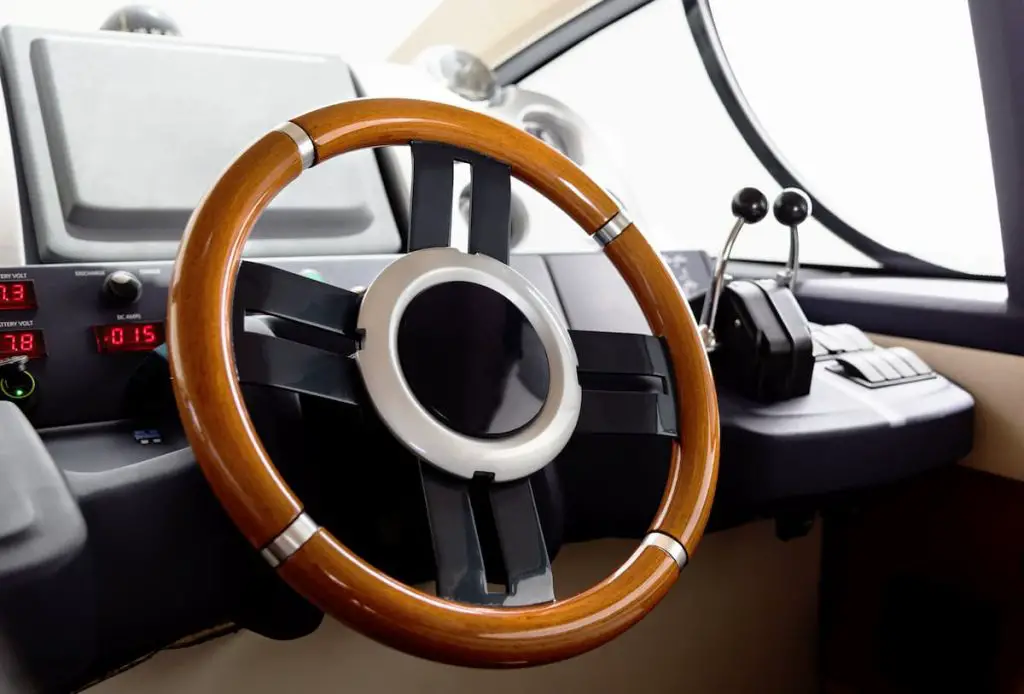
5. Adjusting Engine Height Affects Torque Steer
Torque steer originates in the propeller, and any corrective action you take must have the engine and propeller in mind. So it should come as no surprise that the engine’s height from the water surface can also fix torque steer. When used with trimming out, raising the engine mount height can reduce steering torque to zero.
The standard height for higher mounting is 1 to 3 inches (2.54 to 7.62 centimeters) above the standard level (the water surface level). This height is enough that it can affect trim angle and fix torque steer.
In addition to eliminating torque steer, higher mounted engines also improve general handling and increase speed by reducing lower unit drag. It can also assist planning off by enabling the propeller to suck in surface air, resulting in significantly higher engine RPM. Hence, more usable horsepower when needed.
The increased danger of engine overheating due to inadequate cooling water is a crucial concern when raising an engine to extreme transom heights. Not to mention, boat manufacturers aren’t liable for any warranty requirements resulting from overheated damage caused by this sort of improper setup and operation.
It’s important to be prepared to take on the duty of regularly checking the boat’s cooling water temperature and pressure. As the engine installation height rises, your ability to trim in or out without overheating decreases.
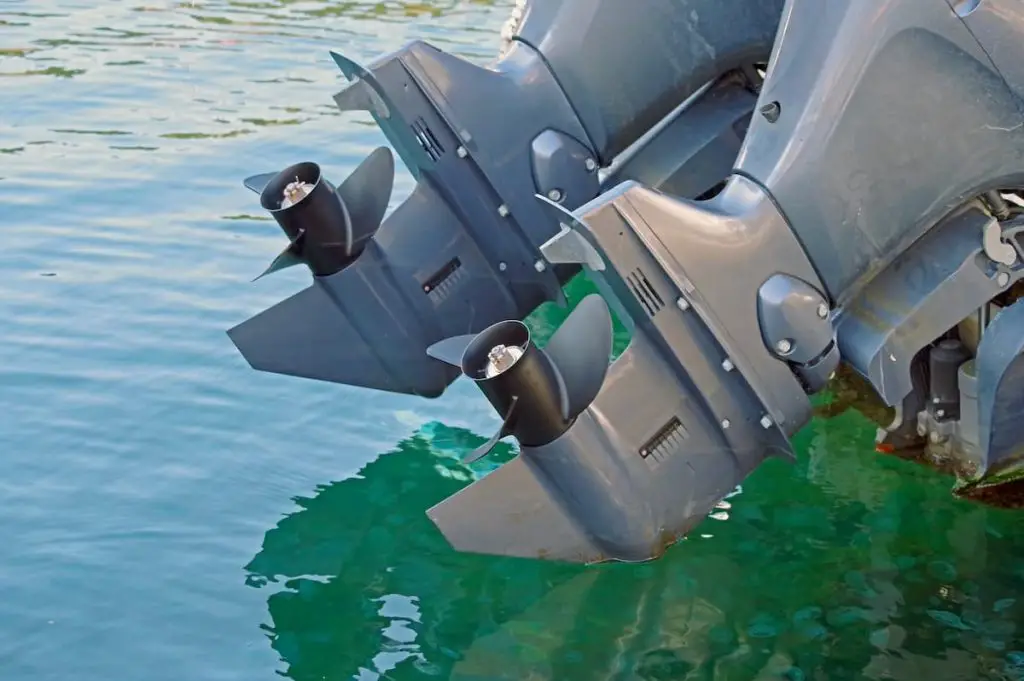
6. Use Hydraulic Steering Can Stop Torque Steer
A hydraulic steering system is a costly but efficient fix to completely erase torque steer on your boat. Since it relies on fluid, there’s no direct link from the engine to the wheel in a hydraulic steering system. This lack of a direct connection is essential because the forces that cause torque steer travel through the mechanical systems from the propeller to the boat’s steering system.
Furthermore, the hydraulic system can only transmit force in one way, which—in this case—is from the steering wheel to the motor via steering input. The torque steer is completely fixed since mechanical forces cannot return from the engine to the wheel through the hydraulic system. The system also makes a boat significantly more balanced during hole shots or quick acceleration.
How To Check for Torque Steer Problems
Torque steer can result in serious handling problems, including heavy or impossible steering in one direction and uncontrolled sharp jerks if you release the wheel.
Here’s how you can quickly check if your boat has torque steer:
- Stop the boat.
- Remove your hands from the wheel.
- Open the throttle. Your boat has a torque steer problem if the steering wheel turns around and drives your boat into a fast turn.
Fortunately, although this issue is serious, you can efficiently fix torque steer by following the instructions I have laid out in this article.
Conclusion
Torque steer results from the propeller and driveshaft rotation being transferred back to a boat’s steering wheel. This transferred rotation causes the boat to turn in the same direction as the propeller, leading to severe handling issues.
Although the tips above will help you eliminate torque steer, they all work in varying degrees and may not be suitable for some kinds of boats. Keep in mind, you may need to use them in tandem with one another or check which method works best.
